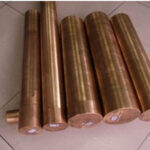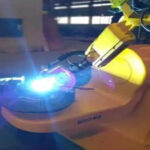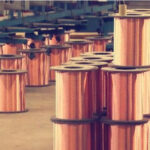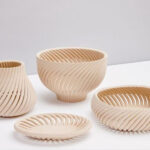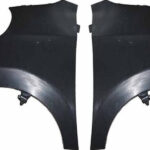The manufacturer of the metal processing workshop does not think about rejecting the customer, but before the customer makes a real request, you never know what the customer needs, you must be prepared for anything. More tools in the toolbox can increase the manufacturer’s ability to handle the required quantity, time, and part complexity. Manufacturers with stamping capabilities can handle almost any requirement well.
Once the design is completed, another difficulty arises: Which process path do you use? What instructions should be performed on the punching machine, laser turret or bending machine?
Stamping or manufacturing? How do you make a decision? ACE Stamping & Machine Co., Racine, Wisconsin, General Stamping and Metal Factory (GSM), South Bend, Indiana; Kapco Metal Stamping, Grafton, Wisconsin, also shared their views and methods on this problem.
James Haarsma, vice president of ACE Stamping and Machinery, said: “How to determine which route to take is one of the biggest challenges we face. This is something I fight every day.”
GSM President and CEO John Axelberg (John Axelberg) said: “When selecting a manufacturing method for a specific part, we will consider the product delivery cycle and the total output of the entire product life cycle, and try to propose The lowest cost option.”
Mike Kenny, vice president of Kapco, said: “For each part, we consider the annual output, geometry, dimensions, features, tolerances, materials, tonnage and size of equipment requirements, and customer tool ROI as the key decision points that drive a specific process. The choice of manufacturing, stamping, or some combination of them is the result of determining the most capable process to produce consistent, defect-free parts at the lowest total cost.”
1. Expenses
Table of Contents
Cost is the key point where all other factors work together. Manufacturers use the advantages of each process to achieve cost-effectiveness.
Kenny cites the ability of stamping technology to combine multiple operations in the stamping machine as a way to help expand the scale. “If there is an opportunity to combine other operations in the stamping process, such as fastening, tapping, extrusion, stamping or part marking, then the reduction in part cost will usually offset the investment in stamping tools and help make decisions.” He said .
He added that stamping can be automated and requires less labor for each part than other operations (such as manual bending machines).
2. Part volume
Part travel is of course one of the key considerations in determining which path to take. Haarsma said: “Trading volume is usually your first indicator. Therefore, we use a threshold of 6,000 per year. If the annualized part batch is 6,000 or more, we usually want to stamp it.” The machine time is that. As part of the decision, so did the delivery time. “At the rate of 15,000 parts per year, all my machine time will be consumed with turrets or lasers. Our delivery time will also be too long.”
Haarsma limited the breakpoint and said it was just a rule of thumb. “Depending on other factors, we may only print 3,000 parts per year.”
Kenny firmly adheres to strict quantitative rules. “Predetermining the number, life cycle and design dynamics will guide the team forward, but there is no clear rule of thumb.” When pushed, he did list a critical value. He said: “In general, parts with an annual output of 5,000 or more will seek stamping business.”
Axelberg did not point out the critical value at all. “We have never drawn a line on the sand. We will try our best to understand the customer’s needs and goals. If the choice is not clear, we will propose a variety of options. There is no fixed number that applies to all areas, because every part is There is a unique set of conditions. This is what makes this business so interesting!”
3. Timetable
Lead time and product development may cause the life cycle of a part from the beginning of manufacturing to the end of stamping.
Axelberg explained how the customer’s timetable became the main driving force. He said: “It depends a lot on when the customer needs the parts.” “For one of our large customers, we have processed 20,000 large-size parts with lasers and bending machines in six weeks.”
Axelberg added that because this work requires a very large annual processing volume, GSM uses long-term, rigorous tools that can take over the project when it is ready. “Then within 12 weeks, the parts are converted to stamped parts. Therefore, it starts with soft tools and ends with hard tools. We will do this regularly.”

Axelberg said that to some extent, laser technology has driven the demand for this two-pronged approach. “I think many original equipment manufacturers have become accustomed to the responsiveness of laser manufacturing plants and their ability to quickly manufacture almost any product.” As a result, when the product is still in the testing phase, customers may not start to consider using hard tools . At other times, the final design of the part must be worked out. In this case, GSM will start with a laser cutting/bending forming process and then develop into a stamping tool.
Axelberg said that another reason customers may not be able to start work in sufficient time to accommodate stamping dies is the nature of their industry sectors. Solar energy is an unpredictable industry. Projects can be very large, and they are usually complex transactions due to the complexity of financing and licensing. The date when the project must be put into service has been determined in advance. On the last day, all other details may be violated. Therefore, for many of these jobs, once they are determined and prosperous, we must go. This is a lot of parts. ”
Axelberg said that the introduction of high-power fiber lasers has had a major impact on calculations that are independent of material type. About five years ago, GSM was building punching and trimming dies to run the cut blanks in its presses. Despite all manual operations, the process is still faster than cutting parts on a laser. “We will machine rectangular parts with square corners on CNC punches because this is faster than laser cutting. Not anymore. Now, we reserve punches for those 3D-capable parts that cannot be created on lasers. Because these punches cannot begin to approach the profiling speed of the fiber laser.”
4. Part size
Kenny discussed another factor: part size. He said that a large part of it will likely force the operation to shift to manufacturing rather than stamping. “This is because the cost of the tool increases with each incremental operation in the tool, and a complete tool may require more real estate than the printing press is available.”
Kenny pointed out that smaller parts have lower mold costs, so the return on investment is shorter. “Large parts may require a larger annual print volume. Alternatively, we can consider multiple processes, such as laser cutting the blank and then manually transferring it to a forming mold, or punching in the mold and then forming in a bending machine .”
Haarsma said the size limitation depends on the forming time of the stamping dies, because the company’s largest stamping bed is 8 feet long. “So for us, if a piece is big and it has knock-out, relief and spray guns, then you will need an automatic press system — 2,000 tons, back-to-back presses because of your progressive selection. Too long. Therefore, on larger parts with many forming features, size is the limiting factor for stamping.”
5. Shapes, contours, geometric shapes, features
Kenny said that in many cases, part geometry, features, tolerances, and required tonnage and dimensional equipment specifications are the main reasons Kapco chooses stamping rather than manufacturing.
He said: “In a servo press, there may be certain features, such as holes, depressions, embossing and ribs, or tolerances, which are more advantageous in a servo press, which may make us consider stamping them,” “The size of the hole and its position relative to the edge may help the choice of stamping or manufacturing.”
Axelberg said that some part designs have no choice but to make stamping dies. Bending machines are designed for bending, not forming. Therefore, we only manufactured hundreds of drawing dies. ”
Haarsma agreed. “For example, stamping is the only process that can form a circle.” He added that due to their complexity, some high-quality parts will run on a turret press.
“I have some parts with a lot of perforated holes, and the annual output is very high. We do run on a turret press. That’s because a lot of things happen in the parts. If we put it in a progressive tool, it will Too long. Customers won’t pay for a $300,000 tool unless it’s large in number.
“We ended up running them on turret presses and punching machines, because you can put many forms in them and do all the cuts at once. Then you bring them into auxiliary operations to form it, just like a 90-degree bend. “Haarsma said.
Haarsma said that the size does determine that when the shape feature is large, the part should be punched on the punch. “If it is round, diaphragm or something, if it is larger than 4 inches, you can’t punch holes in the turret press because it is the same size as the tool holder.” Therefore, only because of the geometry of the part, we must Punch it. ”
6. Tolerance
Haarsma said that another factor that determines a hard mold is tolerance, which cannot be maintained in both turret punches and punch presses. “We encountered 200 parts per month. We stamped them because we had 300 holes, which were closely spaced with a tolerance of + 0 / -1 and a position of + 0 / -2.”
Kenny said that stamping can improve tolerance control and increase repeatability because the tool can get the job done. “Controls and sensors can be added to help better control the process.”
7. Surface treatment, edge quality
Manufacturers say that customers’ preference for specific finishes can point in one direction.
“The edge conditions from stamping to laser cutting are absolutely different,” Axelberg said. “Depending on the type of molding you are forming, small cracks may be more likely to occur on the cutting edge. Stamping edges usually become sharper, so we often use vibratory deburring machines to smooth the edges.”
Halsma puts forward another point of view. “Sometimes customers don’t want laser cut edges. They prefer stamped edges with cracks and flips, so 70% of the material can be cleaned. That’s when you start to get breakthroughs and transitions, but you can deburr them. With the help of The edge of the laser cut, depending on the thickness of the part, you will start to see the beam frequency. It will affect the finish of the side.”
Kenny added: “With the help of a servo press, the degree of separation can be improved.”
8. Material type
Haarsma said that although the type of material forming the component is a factor, with the advent of fiber laser technology, its number is not as high as before. “We pressed titanium, gold and brass. We were very restricted in the past. We could not use CO2 lasers to cut titanium, brass or any red metal as reflective materials. A year and a half ago, we purchased optical fibers that can penetrate these reflective materials. Laser.”
9. Material utilization
Axelberg said that raw material utilization is another key determinant. “The geometry of some parts may leave a lot of waste in the stamping die, but when nested with other parts on the laser, there is almost no waste.” Generally, saving material costs can justify higher processing costs. Axelberg added: “This turning point varies with the cost of steel.
“For example, the parts are made of grade 50 metal with No. 8 galvanized. As production starts to climb, we hope to transition to a full progressive mold. Unfortunately, due to material utilization compared to laser processing Poor, so the mold’s payback period is about 21/2 years. Therefore, we proposed a compromise. We built a two-out blank mold to run the coil, which matched the material output of the laser and greatly increased the output The forming operation is still being completed in the two-stage forming mold of another press.”
Kenny said that he found that the stamping process has better material utilization and lower process costs than the manufacturing process, but the coil yield may be another decision point. He said the company strikes a balance between volume and coil replacement to properly manage efficiency and inventory.
10. Downstream process
Kenny said that stamping can provide better process control, which is important for subsequent operations such as welding and assembly.
Conclusion: Both are better
All three die makers said that having dual production capabilities can improve their products and their ability to retain customers.
Axelberg said: “It’s great to have manufacturing and stamping capabilities.” “I don’t want to be a pure stamper. Or vice versa. When the output of the fab is really high, or if the mold breaks, we can use Stamping machines or laser and bending machines produce parts.”
All three of them said they all cited the project.
“We use several different methods to calculate it,” Haarsma said. “Manufacturing is easier to quote, because you have software that can do a lot of work for you. For stamping, I have to arrange a strip to estimate the yield of the material, so it takes longer than manufacturing.”
Kenny said that Kapco has provided stamping and manufacturing technology to support its customers for the same part at different times in the product life cycle. “It is not uncommon for us to use fab technology to produce the first part to prove the part and provide small batch prototypes until a larger amount of program is needed. Then we invest in stamping dies. Or, when the volume is reduced When stamping becomes infeasible at the end of the product life cycle, we will switch back to manufacturing parts. Our customers can benefit from optimized production processes in small or large quantities.”
Axelberg foresaw that another new technology might change the “fab?” “We don’t have a 3D metal printer yet, but I can see that this technology greatly reduces the cost of forming tools for small batches of complex geometries. cost.”
Link to this article: How does a metalworking manufacturer decide to use manufacturing or stamping technology?
Reprint Statement: If there are no special instructions, all articles on this site are original. Please indicate the source for reprinting:https://www.cncmachiningptj.com/,thanks!
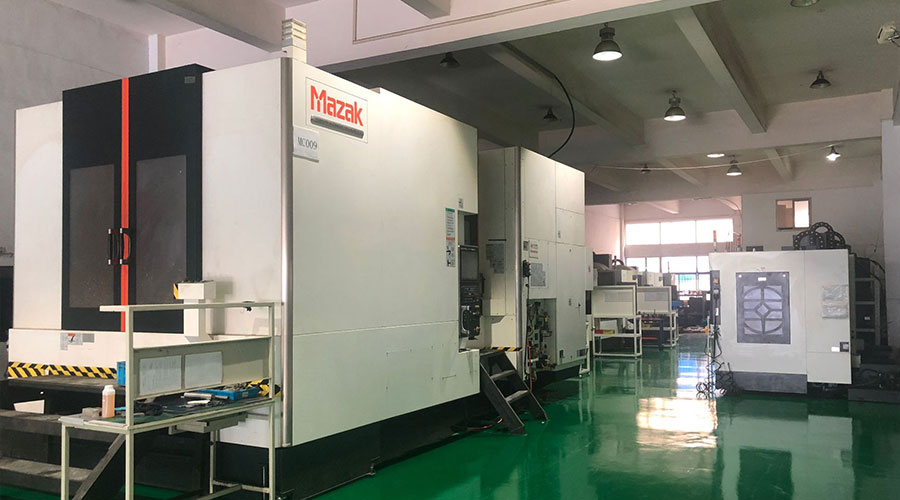 3, 4 and 5-axis precision CNC machining services for aluminum machining, beryllium, carbon steel, magnesium, titanium machining, Inconel, platinum, superalloy, acetal, polycarbonate, fiberglass, graphite and wood. Capable of machining parts up to 98 in. turning dia. and +/-0.001 in. straightness tolerance. Processes include milling, turning, drilling, boring, threading, tapping, forming, knurling, counterboring, countersinking, reaming and laser cutting. Secondary services such as assembly, centerless grinding, heat treating, plating and welding. Prototype and low to high volume production offered with maximum 50,000 units. Suitable for fluid power, pneumatics, hydraulics and valve applications. Serves the aerospace, aircraft, military, medical and defense industries.PTJ will strategize with you to provide the most cost-effective services to help you reach your target,Welcome to Contact us ( [email protected] ) directly for your new project.
3, 4 and 5-axis precision CNC machining services for aluminum machining, beryllium, carbon steel, magnesium, titanium machining, Inconel, platinum, superalloy, acetal, polycarbonate, fiberglass, graphite and wood. Capable of machining parts up to 98 in. turning dia. and +/-0.001 in. straightness tolerance. Processes include milling, turning, drilling, boring, threading, tapping, forming, knurling, counterboring, countersinking, reaming and laser cutting. Secondary services such as assembly, centerless grinding, heat treating, plating and welding. Prototype and low to high volume production offered with maximum 50,000 units. Suitable for fluid power, pneumatics, hydraulics and valve applications. Serves the aerospace, aircraft, military, medical and defense industries.PTJ will strategize with you to provide the most cost-effective services to help you reach your target,Welcome to Contact us ( [email protected] ) directly for your new project.
Link to this article:How does a metalworking manufacturer decide to use manufacturing or stamping technology?
Reprint Statement: If there are no special instructions, all articles on this site are original. Please indicate the source for reprinting.:Cnc Machining,Thank!^^

